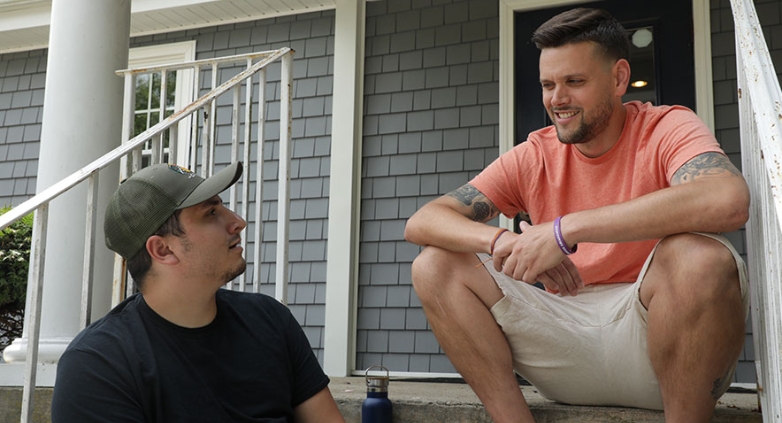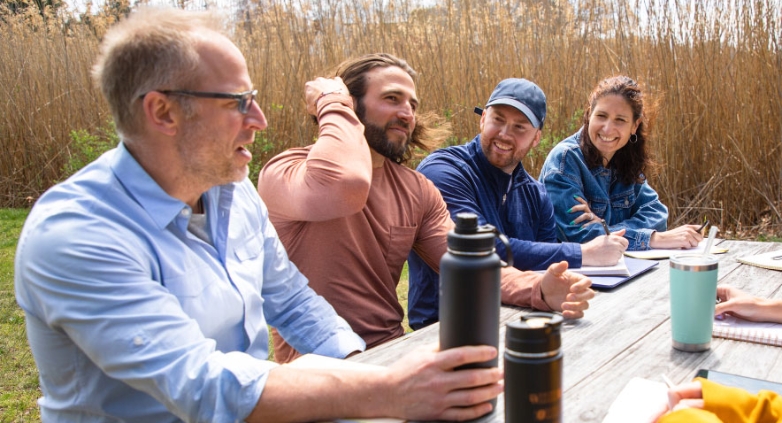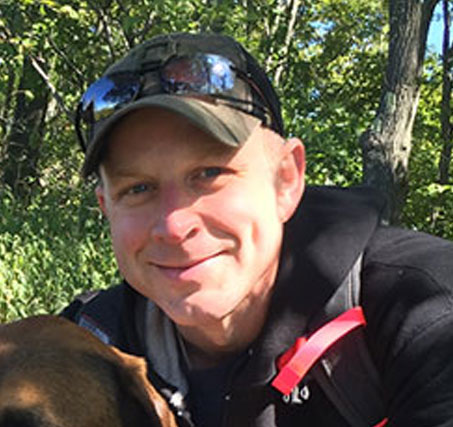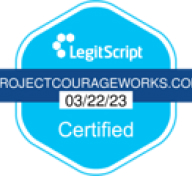
How to Help an Addict Without Enabling – Key Strategies for Support
Helping someone struggling with addiction is never easy.
The emotional toll on loved ones can be overwhelming, especially when trying to find the right balance between offering support and unintentionally enabling their destructive behaviors.
How to help an addict without enabling can be a delicate line to walk, on one hand, you want to help them recover; on the other, you don’t want to inadvertently support their addiction. Understanding the difference between helping and enabling is crucial for both the addict’s recovery and your own mental well-being. Setting boundaries and knowing when to step back is essential for fostering healthy, supportive relationships.
Here are the ways how you can help:
- Understand enabling behaviors
- Recognize the Signs of Enabling
- Setting Clear Boundaries
- Offer Emotional Support Without Enabling
- Know When to Step Back and Let Go

What Does it Mean to Enable an Addict?
Enabling refers to behaviors that make it easier for an addict to continue their destructive habits. This can include covering up their actions, making excuses for them, or providing financial support for their addiction. Enabling can prevent the addict from facing the consequences of their actions, which is crucial for their recovery. It creates a cycle where the addict doesn’t take responsibility, and their behavior continues unchecked.
This article will provide key strategies to help addicts in a healthy way while avoiding the trap of enabling.
Understand Enabling Behaviors
Enabling behaviors often come from a place of love and a desire to help, but they can inadvertently make the addiction worse. Common examples of enabling include:
- Covering up for the addict by making excuses for their actions or behavior.
- Providing financial support to sustain their addiction.
- Taking over responsibilities that the addict should be handling themselves, such as managing their work or family obligations.
While these actions may seem like helpful solutions, they actually prevent the addict from facing the consequences of their addiction. This can perpetuate the cycle of addiction, as the addict may never feel the need to change.
The difference between helping and enabling lies in allowing the addict to take responsibility for their actions and supporting their recovery in a way that encourages independence. How to help an addict without enabling requires you to focus on promoting accountability, not protecting them from the consequences of their behavior.
To learn more about recognizing and breaking enabling behaviors, check out Living with an Alcoholic.

Recognize the Signs of Enabling
It’s often difficult to identify when you’re enabling because it can feel like you’re doing the right thing. However, enabling behaviors can harm both the addict and the enabler in the long run. Here are some common enabling behaviors to watch out for:
- Making excuses for the addict’s behavior, such as lying or covering up their actions.
- Taking on their responsibilities (e.g., handling their bills, cleaning up after them).
- Caring for their well-being to the detriment of your own needs, such as prioritizing their issues over your own mental and emotional health.
The emotional consequences of enabling can be damaging. The enabler may feel guilty, resentful, or exhausted, and this strain can lead to unhealthy relationship dynamics. Codependency is often a byproduct of enabling, where the enabler feels responsible for the addict’s well-being and loses their sense of self.
If you’re unsure whether you’re enabling, seek guidance through therapy or support groups. Al-Anon and Nar-Anon are excellent resources for families affected by addiction.

Setting Clear Boundaries
Supporting an addict without enabling requires setting clear, consistent boundaries and encouraging them to take responsibility for their recovery. Here’s how you can do that:
- Set clear boundaries: Define what behaviors you will and won’t tolerate. This includes not providing financial support for their addiction or covering up their mistakes. Setting boundaries helps protect your own well-being and prevents you from enabling their behavior.
- Encourage accountability: Instead of fixing problems for the addict, encourage them to take responsibility. Whether it’s seeking treatment, attending meetings, or managing their own finances, make sure the addict knows that you will not take over their responsibilities.
- Foster independence: Helping an addict without enabling means encouraging their independence. Support them in finding professional help, but don’t take on their responsibilities. It’s important for them to engage in their own recovery process rather than relying on you to do it for them.
Free Download
Proven Programs for Lasting Recovery
Receive your free guide to understanding alcohol addiction and discovering recovery programs tailored to you. Learn how to build a personal sobriety plan and get support every step of the way.
Offer Emotional Support Without Enabling
Providing emotional support to an addict can be challenging, especially when you feel the urge to fix their problems. However, there’s a fine line between offering emotional support and enabling destructive behaviors. Here’s how you can support an addict without enabling:
- Active listening vs. problem-solving: Sometimes, addicts just need someone to listen. Resist the urge to offer solutions or advice unless they specifically ask for it. Active listening helps them feel heard, but doesn’t place the responsibility on you to fix their issues.
- Encourage professional help: The best way to support an addict is by encouraging them to seek professional help. Therapy, rehabilitation, and support groups (like AA or NA) are key components in the recovery journey.
- Support their recovery journey: Be supportive without taking on their burden. You can offer emotional support by checking in, encouraging positive changes, and celebrating small victories, but avoid rescuing them from their consequences.
Know When to Step Back and Let Go
Knowing when to step back and detach is an essential part of how to help an addict without enabling. Sometimes, the addict must face the full consequences of their actions in order to begin their recovery process. Here’s when it may be time to step back:
- Allow the addict to face consequences: By stepping back, you allow the addict to feel the consequences of their addiction, which can be a powerful motivator for change.
- Detach with love: Detachment doesn’t mean abandoning the addict, it means focusing on your own well-being while still offering support when appropriate. This helps both you and the addict.
- Take care of yourself: If you find that your emotional or physical health is suffering from the relationship, it’s important to seek support and consider detaching for your own well-being.
For guidance on when to step back, check out How to Help an Alcoholic Son.

Self-Care and Support for Loved Ones
Taking care of your own emotional and mental health is essential when helping someone with addiction. Here’s how to ensure you’re maintaining your well-being while supporting your loved one:
- Seek therapy or counseling: It’s important to process your own feelings and learn healthy coping mechanisms. Therapy can help you set boundaries and manage stress.
- Join support groups: Support groups such as Al-Anon or Nar-Anon can provide valuable peer support. Connecting with others who understand your situation can reduce feelings of isolation and provide a sense of community.
- Maintain your boundaries: Make sure that you are not sacrificing your well-being for the addict’s. Keeping healthy boundaries will allow you to provide the necessary support without enabling their addiction.
FAQS
Helping involves encouraging recovery and supporting healthy choices, while enabling makes it easier for the addict to continue destructive behaviors by shielding them from consequences.
Setting boundaries is a form of self-care. Remember, you are not abandoning the addict—you are helping them by allowing them to take responsibility for their recovery.
You can’t force someone to seek help, but you can encourage them and make sure they understand that you will not support their addiction.
Enabling prolongs the addiction, prevents the addict from facing consequences, and can damage the relationship. It can also negatively affect your emotional health.
Joining support groups such as Al-Anon or seeking therapy can provide the emotional support you need. Visit Al-Anon for more resources.
Free Download
Proven Programs for Lasting Recovery
Receive your free guide to understanding alcohol addiction and discovering recovery programs tailored to you. Learn how to build a personal sobriety plan and get support every step of the way.
Taking the Next Step in Helping an Addict Without Enabling
In conclusion, how to help an addict without enabling involves setting boundaries, encouraging accountability, and fostering independence. While it’s important to support your loved one’s recovery, enabling behaviors can prevent them from taking responsibility. By practicing self-care and seeking support, you can protect your own well-being while supporting their journey toward recovery.
If you’re ready to take the next step, consider reaching out to Project Courage for guidance on family support and recovery programs.


